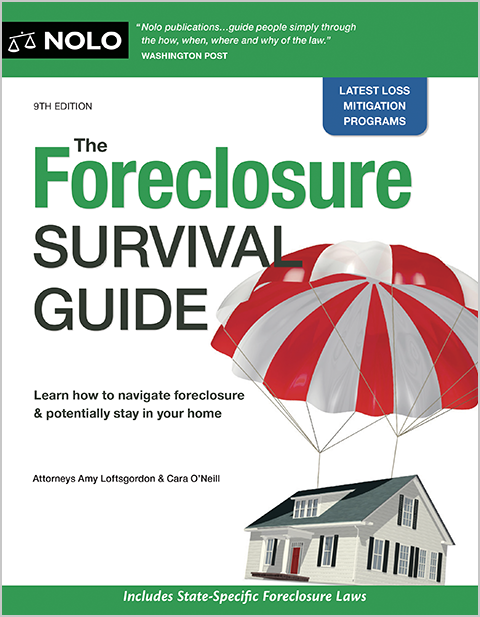Does my mortgage company have to send monthly mortgage statements? Generally, yes.
In response to the foreclosure crisis, Congress passed the Dodd-Frank Wall Street Reform and Consumer Protection Act. This federal law imposed new obligations on mortgage creditors and loan servicers. It also gave the Consumer Financial Protection Bureau (CFPB) the ability to implement new requirements and adopt new rules.
One of these rules, the "periodic statement rule," requires mortgage lenders and servicers to provide homeowners with prompt, regular, and accurate information about their mortgage loans. Under this federal law, servicers must send monthly mortgage statements, subject to a few exceptions, containing detailed information about your payment, delinquency, and who to contact for questions.
- What Is the "Periodic Statement Rule?"
- When the Servicer Must Send the Mortgage Loan Statement
- Who Is Required to Provide a Monthly Mortgage Statement?
- Are There Any Exceptions to the Periodic Statement Rule?
- Information That Must Be Included in the Mortgage Loan Statement
- How the Periodic Statement Rule Helps Consumers
- For More Information About Mortgage Servicing Rules
What Is the "Periodic Statement Rule?"
Among other things, the periodic statement rule says that the mortgage creditor or servicer must send periodic billing statements to the borrower. Under this rule, your mortgage creditor or servicer must provide you with a mortgage statement each billing cycle, usually monthly, that meets specific timing and content requirements.
When the Servicer Must Send the Mortgage Loan Statement
The periodic statement must be delivered or placed in the mail within a reasonably prompt time after the payment due date or the end of any courtesy period provided for the previous billing cycle. (12 C.F.R. § 1026.41 (2024).)
Generally, delivering, emailing, or placing the mortgage loan statement in the mail within four days of the close of the courtesy period of the previous billing cycle is considered reasonably prompt.
Who Is Required to Provide a Monthly Mortgage Statement?
Under federal law, unless an exception applies, the mortgage statement rule applies to closed-end consumer credit transactions secured by a dwelling. (12 C.F.R. § 1026.41 (2024).) In plain English, that means it applies to mortgage loans. So, mortgage lenders have to send monthly mortgage statements.
Are There Any Exceptions to the Periodic Statement Rule?
Some types of loans are exempt from the requirements of the periodic statement rule, including:
- open-end lines of credit or home equity lines of credit (home equity loans on the other hand, are covered under the rule)
- reverse mortgages
- timeshare loans
- loans serviced by small servicers (servicers with no more than 5,000 loans and the servicer is the creditor for all of them), a Housing Finance Agency (a government agency that provides loans with low rates for low- and middle-income borrowers), a nonprofit entity that services 5,000 or fewer mortgage loans, and
- fixed-rate loans with coupon books containing certain information such as the payment due date, interest rate, etc. (12 C.F.R. § 1026.41 (2024).)
Also, the servicer doesn't have to send loan statements if the borrower is in bankruptcy or has received a bankruptcy discharge and:
- the debtor has requested the servicer stop sending periodic statements
- the debtor's bankruptcy plan surrenders the property, strips the lien, or otherwise doesn't provide for payment of the mortgage arrearage or post-petition payments
- the bankruptcy court grants the servicer's motion for relief from the automatic stay, enters an order approving a lien strip, or requires the servicer to stop sending statements to the debtor; or
- the debtor files a statement of intention to surrender the encumbered property and the debtor has not made any partial or periodic payments after the commencement of the bankruptcy. (12 C.F.R. § 1026.41 (2024).)
In addition, the servicer doesn't have to send statements if the loan is charged off and the servicer won't charge any additional interest or fees on the loan, and it provides a "Suspension of Statements & Notice of Charge Off" disclosure within 30 days of the charge-off or most recent periodic statement. (12 C.F.R. § 1026.41 (2024).)
Information That Must Be Included in the Mortgage Loan Statement
The periodic statement rule requires that all of the following information be included in the mortgage loan statement.
Amount Due
The statement must show how much you owe, the payment due date, and the amount of the late fee if you submit payment after the courtesy period expires.
Explanation of the Amount Due
A breakdown of how much money per payment will be applied to principal, interest, and escrow, as well as the total of any fees imposed since the last statement and any past-due amounts, must also be contained in the mortgage loan statement. This information will help you track how your payments are distributed among the different categories.
Also, be on the lookout to ensure the servicer doesn't make an error, such as charging improper fees.
Past Payment Breakdown and Transaction Activity
The mortgage statement must include a list of all transaction activity and a breakdown of payments you made since the last statement and since the beginning of the calendar year. It must also show how those payments were applied to principal, interest, escrow, fees, and suspense. The mortgage loan statement must include the date of the transaction, a brief description of the transaction, and the amount of the transaction.
Partial Payment Information
The statement also must include information about what happens if you send less than a full payment to the servicer.
Partial payments. The statement will also show you what happened to any partial payments (payments that were less than the total amount owed) you sent in.
The statement must show the mortgage suspense balance. Partial payments are often placed into a suspense account, which is used to temporarily hold funds until they're allocated. The nature of this type of account, what it is used for, and when it is used, have often been confusing for borrowers. Now, statements must clearly indicate which funds were placed into suspense (if any) and explain what must be done for the funds to be applied to your account.
Contact Information
The mortgage loan statement must provide you with the following:
- a toll-free number and email address (if applicable) so that you can get information about your account, and
- the special mailing address, if there is one, for making a qualified written request about your loan or to report a servicing error.
The purpose of this requirement is to ensure that you have access to someone who can answer questions about your account and so that any qualified written request is received and addressed by a specially-trained employee.
Account Information
In addition, the billing statement must provide you with specific information relating to your account, including:
- the outstanding principal balance you owe on the loan
- the current interest rate and the date that the interest rate may change (if applicable)
- the penalty for prepaying the loan, and
- information about how to find a housing counselor who can help you if you are in danger of falling behind in your mortgage payments or have already fallen behind.
This requirement is designed to provide borrowers with improved information about their loan so they're not caught off guard when an interest rate adjusts, for example.
Delinquency Information
If you're 45 days or more behind in payments, the statement must provide particular information related to the delinquency, including:
- the date you became delinquent
- the amount needed to bring the account current
- information about possible risks and expenses (like foreclosure or legal fees) you face if you don't catch up on payments
- your account history for the past six months or the period since the last time you were current (whichever is shorter)
- information about any loss mitigation (foreclosure avoidance option) program you've agreed to
- information about whether the foreclosure process has started, and
- information about housing counseling.
If you're behind in payments, this information will give you a good idea of what you need to do to get caught up. It will also assist you in making sure that the servicer doesn't make an error, like starting a foreclosure in violation of the law. For example, the servicer may not dual-track your loan.
How the Periodic Statement Rule Helps Consumers
This mortgage statement rule is designed to provide you clear information about how much you owe, when you owe it, how much you will be charged if the payment is late, and keep track of when the late charge is actually due.
In the past, some mortgage statements weren't clear about the total amount due if the payment is on time versus the total amount due if the payment is late. As a result, borrowers often inadvertently included late charges in their payment even though they weren't due.
For More Information About Mortgage Servicing Rules
Ultimately, the periodic statement rule is designed to ensure that you receive prompt, regular, and accurate information about your mortgage loan. To learn more about this rule and other mortgage servicing rules, go to the Consumer Financial Protection Bureau's website or talk to a foreclosure lawyer.
- What Is the "Periodic Statement Rule?"
- When the Servicer Must Send the Mortgage Loan Statement
- Who Is Required to Provide a Monthly Mortgage Statement?
- Are There Any Exceptions to the Periodic Statement Rule?
- Information That Must Be Included in the Mortgage Loan Statement
- How the Periodic Statement Rule Helps Consumers
- For More Information About Mortgage Servicing Rules

